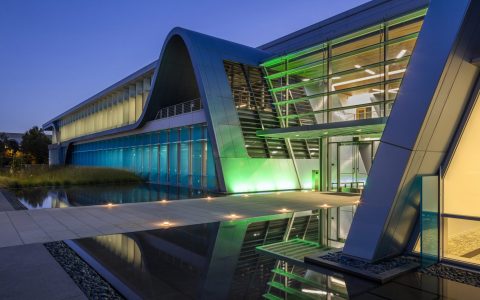Understanding Bio-Based Concrete
Bio-based concrete, also known as bioconcrete, refers to a category of construction materials that incorporate biological or organic components as partial or full replacements for traditional concrete constituents like aggregates or cement. These materials aim to offer more sustainable and environmentally friendly alternatives to conventional concrete.
Key Characteristics and Advantages
Bio-based concretes exhibit several distinct properties offering notable benefits:
- Reduced Environmental Footprint: Many bio-based materials are renewable, sequester carbon dioxide during their growth, and can lead to lower embodied energy in the final product compared to ordinary Portland cement (OPC) based concrete.
- Improved Thermal Insulation: The porous nature of many organic aggregates (e.g., hemp shives, wood chips) contributes to enhanced thermal resistance, potentially reducing building energy consumption for heating and cooling.
- Lightweight: Bio-aggregates are generally less dense than mineral aggregates, resulting in lighter concrete. This can reduce structural load requirements and facilitate easier handling and transportation.
- Moisture Regulation: Some bio-based materials possess hygroscopic properties, allowing them to absorb and release moisture, which can contribute to a more stable indoor humidity.
- Waste Valorization: The use of agricultural or forestry by-products as aggregates promotes a circular economy by diverting waste streams from landfills.
Common Materials and Formulations
The composition of bio-based concrete can vary significantly:

Bio-aggregates:
- Plant-based: Hemp shives, flax shives, wood chips/fibers, bamboo, straw, corn cobs, rice husks, cork.
- Fungi-based: Mycelium (the root network of fungi) can be used to bind organic substrates into solid forms.
Binders:
- Predominantly lime-based (e.g., hydraulic lime, hydrated lime) due to its lower environmental impact and compatibility with organic materials.
- Pozzolanic materials (natural or artificial) can be added to improve strength and durability.
- Geopolymers or alkali-activated binders.
- Partial replacement of OPC with supplementary cementitious materials.
- Emerging bio-binders derived from microbial processes or plant resins.
Potential Applications
While often not possessing the same compressive strength as traditional concrete, bio-based concretes are suitable for various applications:
- Non-load bearing infill walls
- Insulation blocks and panels
- Floor screeds
- Prefabricated elements
- Restoration of historic buildings (using compatible materials)
- Acoustic absorption panels
Challenges and Future Outlook
Despite their advantages, bio-based concretes face challenges:
- Mechanical Performance: Generally lower compressive and flexural strength compared to conventional concrete, limiting structural applications without reinforcement or specific design considerations.
- Durability: Susceptibility to moisture, biodegradation, and pest attacks if not properly designed, treated, or protected.
- Standardization and Regulation: Lack of widespread standards and building codes can hinder adoption.
- Variability: Natural materials can exhibit variability in properties, requiring robust quality control.
Ongoing research focuses on enhancing mechanical properties, improving durability through innovative treatments and binder formulations, developing standardized testing methods, and scaling up production for wider market acceptance. The drive towards sustainable construction practices continues to fuel interest and development in bio-based concrete technologies.








